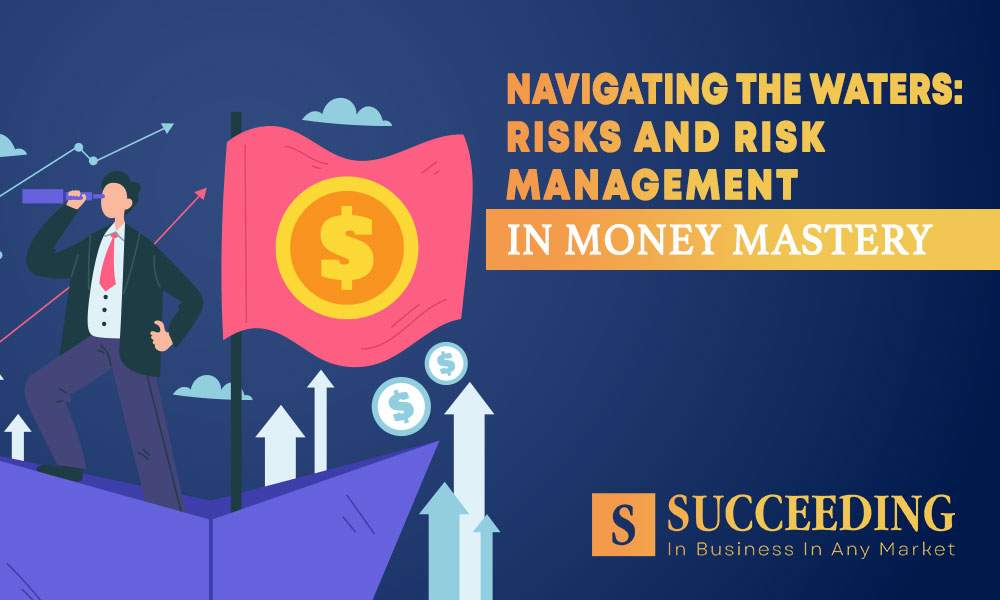In the intricate journey towards money mastery, understanding and effectively managing risks is as crucial as the pursuit of financial success. This article delves into the multifaceted world of financial risks, providing insights into identifying potential pitfalls and implementing risk management strategies. We’ll explore the role of insurance, emergency funds, diversification, debt management, and regular financial checkups in mitigating risks and ensuring financial resilience.
Identifying Financial Risks
Financial risks are inherent in the dynamic landscape of personal finance. These risks encompass various aspects, including market volatility, job loss, and unexpected expenses. Identifying potential risks is the first step in effective risk management. By understanding the uncertainties that may arise, individuals can proactively prepare for and mitigate the impact of unforeseen events on their financial stability.
Consider a scenario where a sudden economic downturn leads to job losses. Identifying the risk of unemployment allows individuals to create a financial safety net, helping them navigate periods of reduced income without jeopardizing their financial well-being.
The Role of Insurance in Risk Management
Insurance serves as a crucial tool in mitigating financial risks. Different types of insurance, such as health, life, and property insurance, play a pivotal role in providing a safety net for unexpected events. In the event of a medical emergency or the loss of a loved one, having appropriate insurance coverage can prevent financial devastation.
Insurance not only protects against unforeseen circumstances but also provides peace of mind, allowing individuals to focus on their financial goals without the constant worry of potential financial setbacks.
Emergency Funds and Contingency Planning
An emergency fund is a cornerstone of effective risk management. Unexpected expenses, such as medical emergencies or necessary home repairs, can disrupt financial plans. A well-funded emergency fund acts as a financial cushion, allowing individuals to address these unforeseen challenges without resorting to high-interest debt or derailing long-term financial goals.
Contingency planning goes hand in hand with emergency funds. By anticipating potential risks and having a plan in place, individuals can respond more effectively to unexpected events. This could involve outlining steps to cut discretionary spending during challenging times or identifying alternative income streams.
Diversification in Investments
Diversifying investments is a key strategy for managing risks in the realm of personal finance. It involves spreading investments across different asset classes, such as stocks, bonds, and real estate. The goal is to minimize the impact of poor-performing investments on the overall portfolio.
Consider a scenario where economic conditions adversely affect a specific industry, leading to a decline in the stock value of companies within that sector. If an individual’s investments are diversified, the impact of this downturn is mitigated by the positive performance of other assets, contributing to a more stable and resilient investment strategy.
Debt Management and Avoidance
Debt, if mismanaged, can pose a significant risk to financial stability. High-interest debt, in particular, can accumulate rapidly and hinder progress towards financial goals. Effectively managing and reducing debt is a crucial aspect of risk management.
By implementing strategies such as budgeting, debt consolidation, and prioritizing high-interest debt repayment, individuals can mitigate the risks associated with excessive debt. This not only frees up resources for other financial goals but also reduces vulnerability to economic downturns or unexpected expenses.
Regular Financial Checkups
Regular financial checkups are akin to preventive healthcare for your finances. Periodic assessments help identify and address emerging risks before they escalate. This involves reviewing income, expenses, investment portfolios, and overall financial goals.
A financial checkup may reveal changes in personal circumstances, such as a new job, the birth of a child, or a significant expense on the horizon. By staying vigilant and adapting the financial strategy to changing circumstances, individuals can navigate the unpredictable nature of financial markets and life events with greater ease.

Conclusion
In the ever-evolving landscape of personal finance, risks are inevitable. However, by understanding these risks and implementing effective risk management strategies, individuals can navigate the waters of financial uncertainty with confidence and resilience. Money mastery isn’t just about pursuing success; it’s about fortifying oneself against the challenges that may arise along the way.
Encourage readers to assess their own financial risks, identify areas for improvement, and implement risk management strategies. Invite them to share their experiences and strategies in the comments below.
FAQs:
Q1: Why is it important to identify financial risks?
A1: Identifying financial risks is crucial for effective risk management. It allows individuals to proactively address potential challenges, whether it’s market volatility, unexpected expenses, or job loss. Understanding and acknowledging these risks are the first steps toward building a resilient financial strategy.
Q2: How does diversification reduce investment risks?
A2: Diversification involves spreading investments across different asset classes to minimize the impact of poor-performing investments on the overall portfolio. By not putting all your eggs in one basket, you reduce the risk associated with the performance of a single investment, contributing to a more stable and resilient investment strategy.
Q3: What is the role of emergency funds in risk management?
A3: Emergency funds serve as a financial safety net, helping individuals weather unexpected expenses or income disruptions. Having a well-funded emergency fund is a key component of risk management, providing a buffer against unforeseen events and ensuring financial stability during challenging times.




